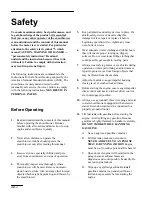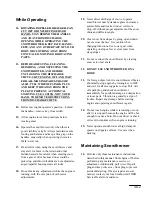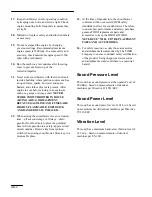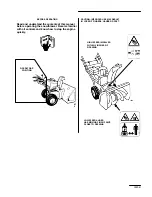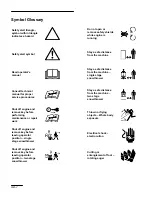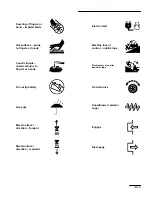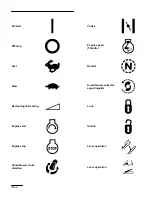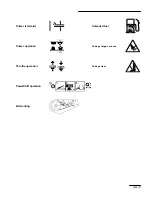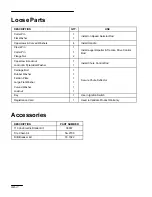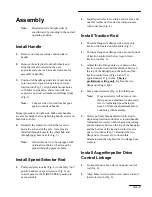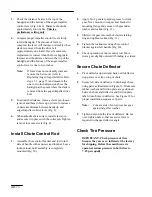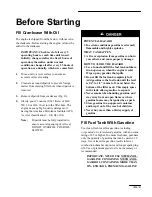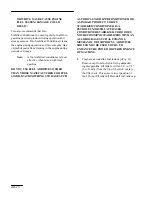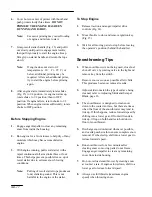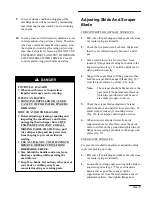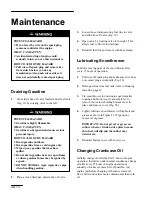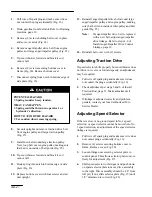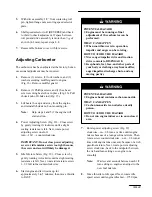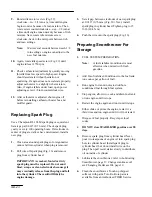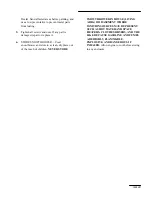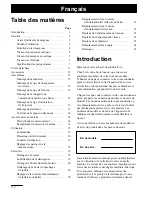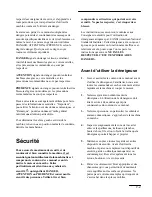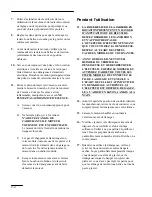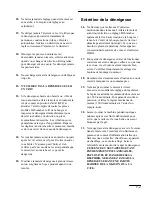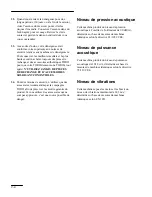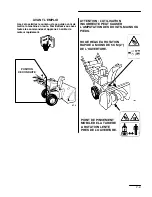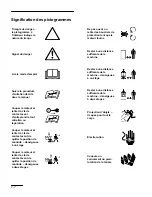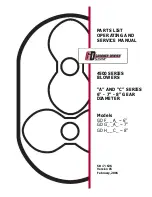
GB–17
6.
Cover hole in center of primer with thumb and
push primer slowly three times. DO NOT
PRIME IF THE ENGINE HAS BEEN
RUNNING AND IS HOT.
Note:
Excessive priming may cause flooding
of engine and failure to start.
7.
Grasp recoil starter handle (Fig. 15) and pull it
out slowly until positive engagement results;
then pull vigorously to start the engine. Keep
firm grip on starter handle and return the rope
slowly.
Note:
If engine does not start or if
temperature is –10
_
F (–23
_
C) or
below, additional priming may be
required. After each additional prime,
try to start the engine before priming
again.
8.
After engine starts, immediately rotate choke
(Fig. 15) to 3/4 position. As engine warms up,
rotate choke to 1/2 position; then to OFF
position. If engine falters, return choke to 1/2
position. When engine warms sufficiently, rotate
choke to OFF position.
Before Stopping Engine
1.
Engage auger/impeller to clear any remaining
snow from inside the housing.
2.
Run engine for a few minutes to help dry off any
moisture which may have accumulated on
engine.
3.
With engine running, pull recoil starter with a
rapid, continuous full arm stroke three or four
times. This helps prevent possible freeze–up of
recoil starter due to extreme snow blowing
conditions.
Note:
Pulling of recoil starter rope produces a
loud, clattering sound. This is not
harmful to the engine or the starter.
To Stop Engine
1.
Release traction and auger/impeller drive
controls (Fig. 14).
2.
Move throttle to slow and remove ignition key
(Fig. 15).
3.
Wait for all moving parts to stop before leaving
the operator’s position (behind the handles).
Snowthrowing Tips
1.
When snowthrower is not being used, close fuel
shut–off valve by rotating valve to the right and
remove key from the switch.
2.
Remove snow as soon as possible after it falls.
This produces best snow removal results.
3.
Adjust skids to match the type of surface being
cleaned; refer to Adjusting Skids and Scraper
Blade, page 18.
4.
The snowthrower is designed to clean snow
down to the contact surface, but there are times
when the front of the snowthrower may tend to
ride up. If this happens, reduce forward speed by
shifting into a lower gear. If front still tends to
ride up, lift up on both handles to hold down
front of snowthrower.
5.
Discharge snow downwind whenever possible,
and overlap each swath to ensure complete snow
removal. If wheels slip, shift into a lower gear to
reduce forward speed.
6.
Run snowthrower for a few minutes after
clearing snow so moving parts do not freeze.
Engage auger/impeller to clear any remaining
snow from inside housing.
7.
Do not overload snowthrower by clearing snow
at too fast a rate. If engine slows down, shift to a
lower gear to reduce forward speed.
8.
Always use full throttle (maximum engine
speed) when throwing snow.

